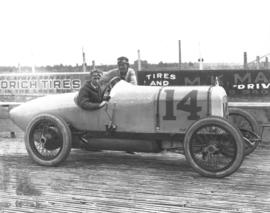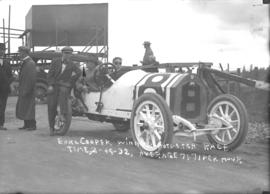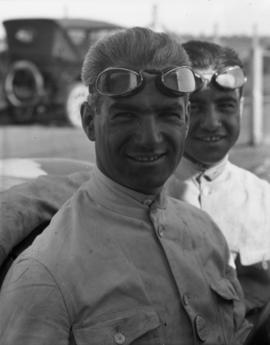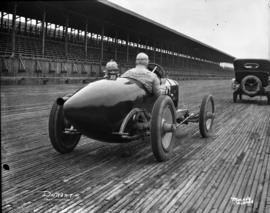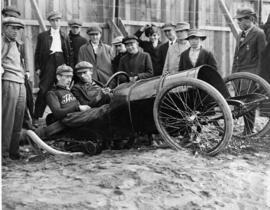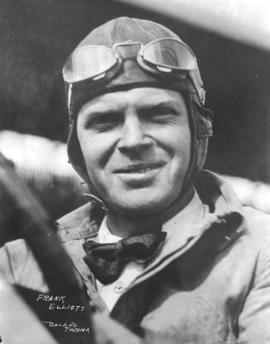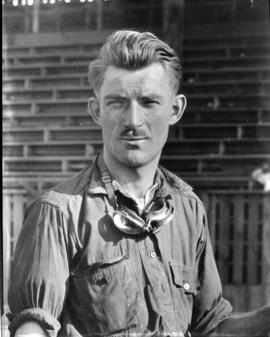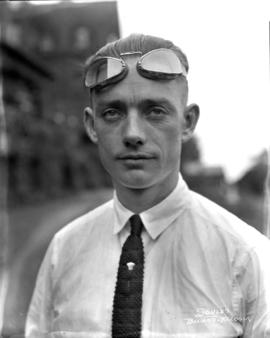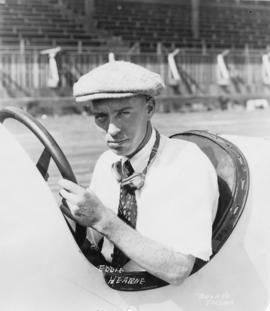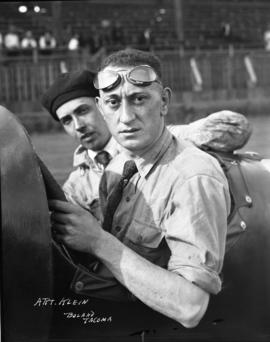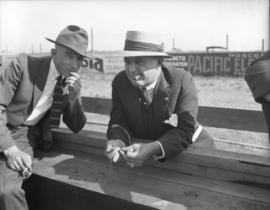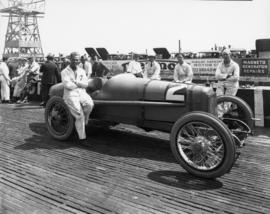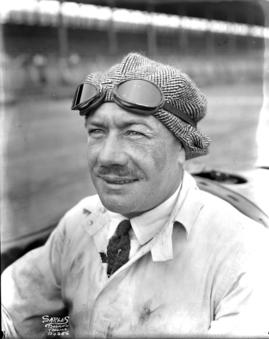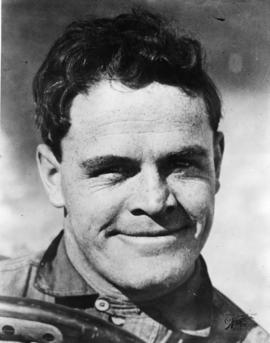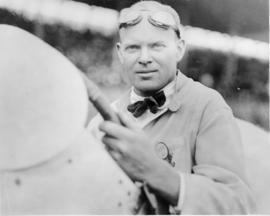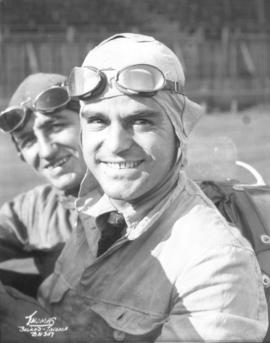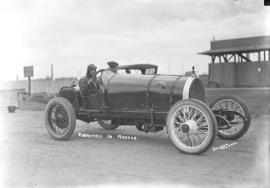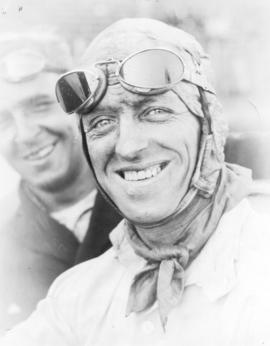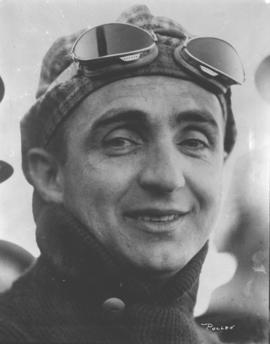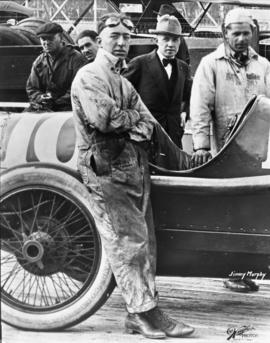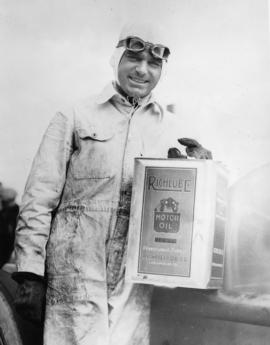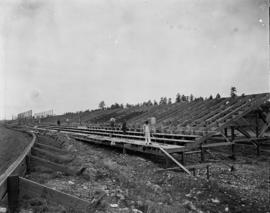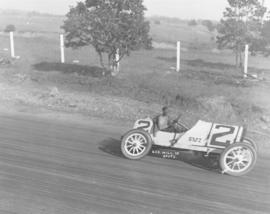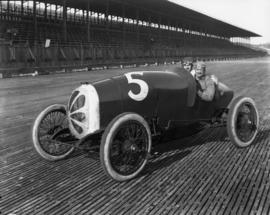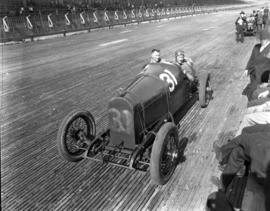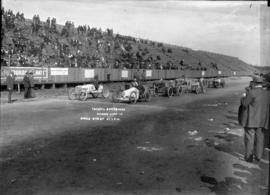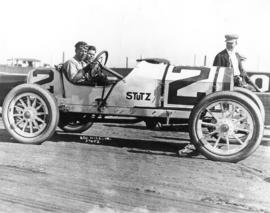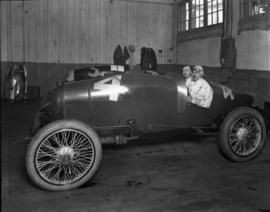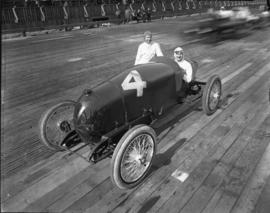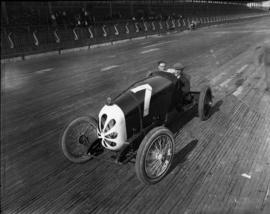- Item
- 1919-07
Part of Marvin Boland Photographs
Fresh off a second place finish at the Indy 500, driver Eddie Hearne returned to the Tacoma Speedway racetrack to compete in the Pacific Coast championship on July 4, 1919. He is pictured above with "mechanician" Harry Hartz at his side. Five top racers were invited to the Speedway to battle for $15,000 in prize money. A crowd of nearly 40,000, Speedway's largest crowd to date, saw Mr. Hearne, Louis Chevrolet, Ralph Mulford, Cliff Durant and Dario Resta battle in the eighth annual auto race there. Refereed by former ace and 1916's 300-mile winner Eddie Rickenbacker, the men drove in three races of 40,60 and 80 miles. Eddie Hearne in his Durant Special #14 qualified fourth at 100 mph and so started in the second row along with Dario Resta. Although his car completed the course in all three races, Mr. Hearne did not come in first in any of the races. He finished fourth in the 40 mile, third in the 60 mile and second in the third and longest race of 80 miles. (TNT 7-2-19, p. 19-article; TNT 7-5-19, p. 1, 13-results) TPL-115; G51.1-137
Hearne, Eddie; Hartz, Harry; Tacoma Speedway (Lakewood); Racetracks--Lakewood--1910-1920; Automobile racing--Lakewood--1910-1920; Racing automobiles--1910-1920;
